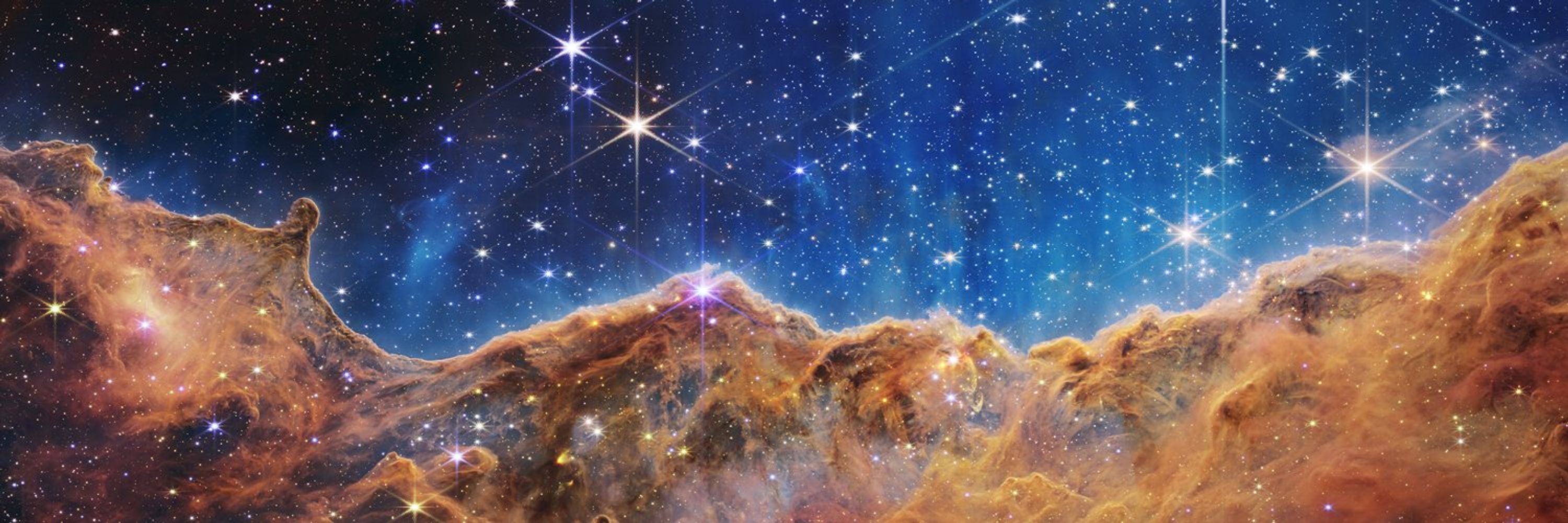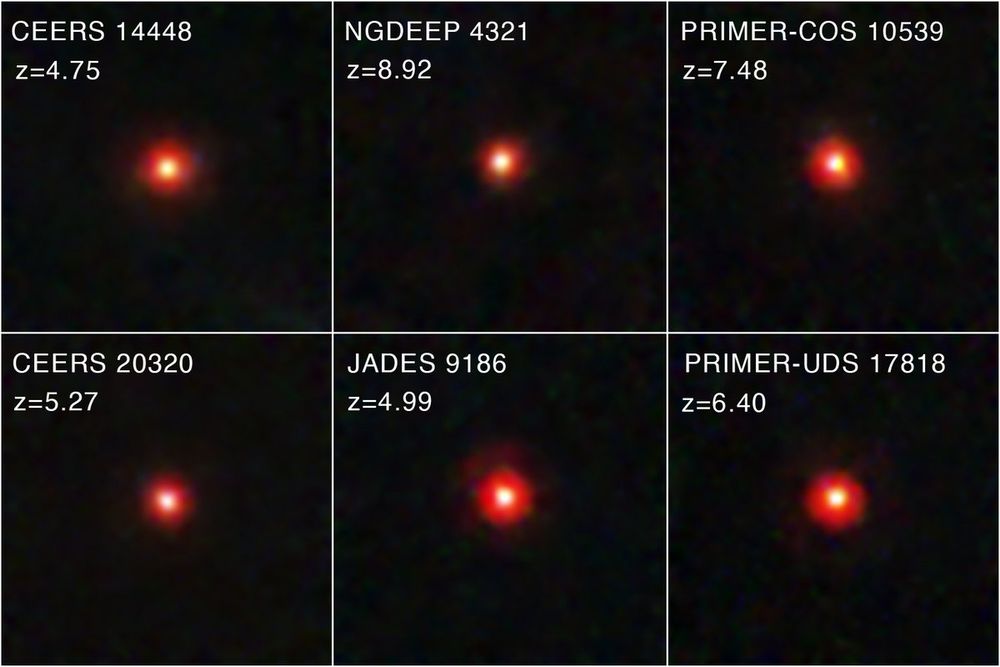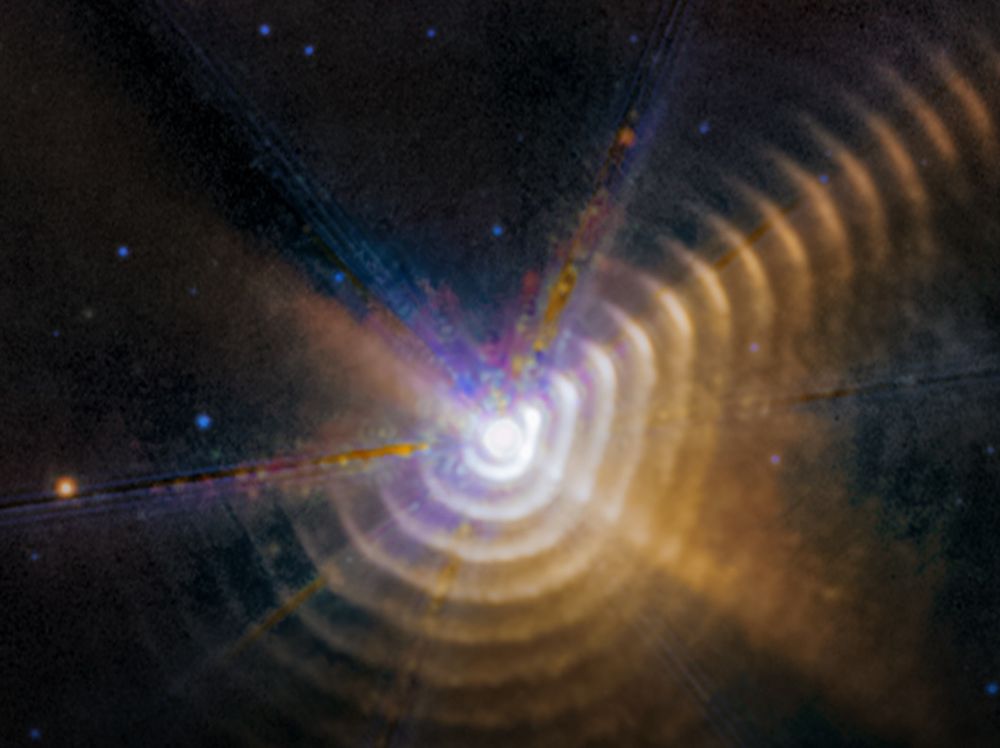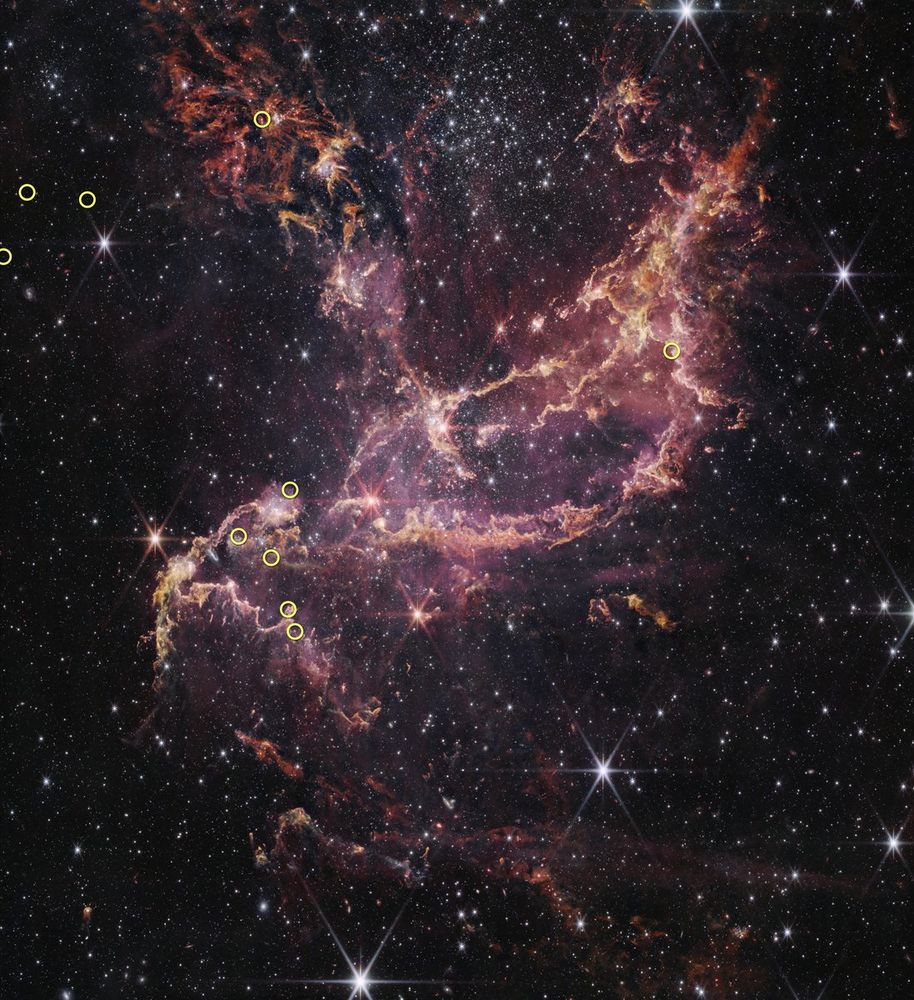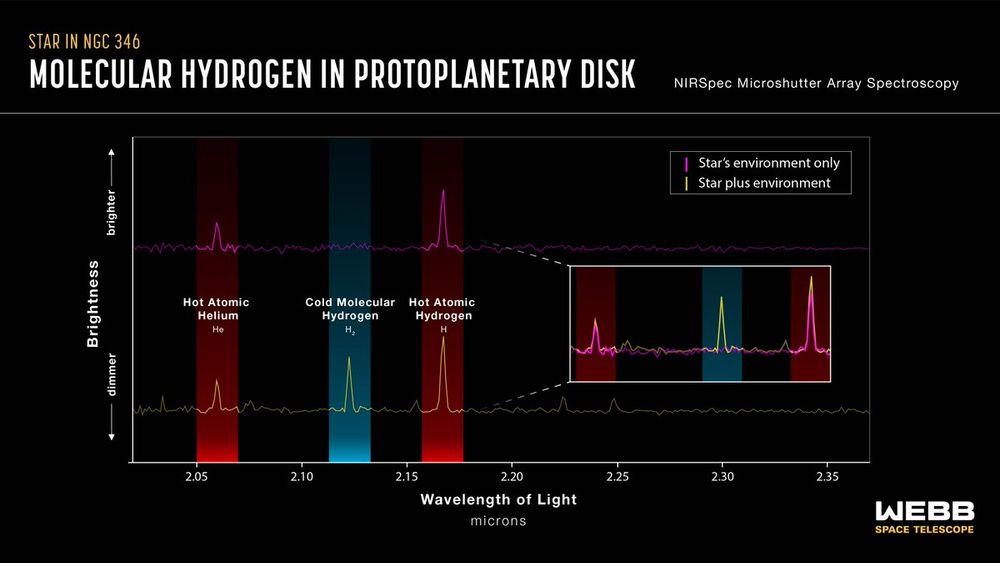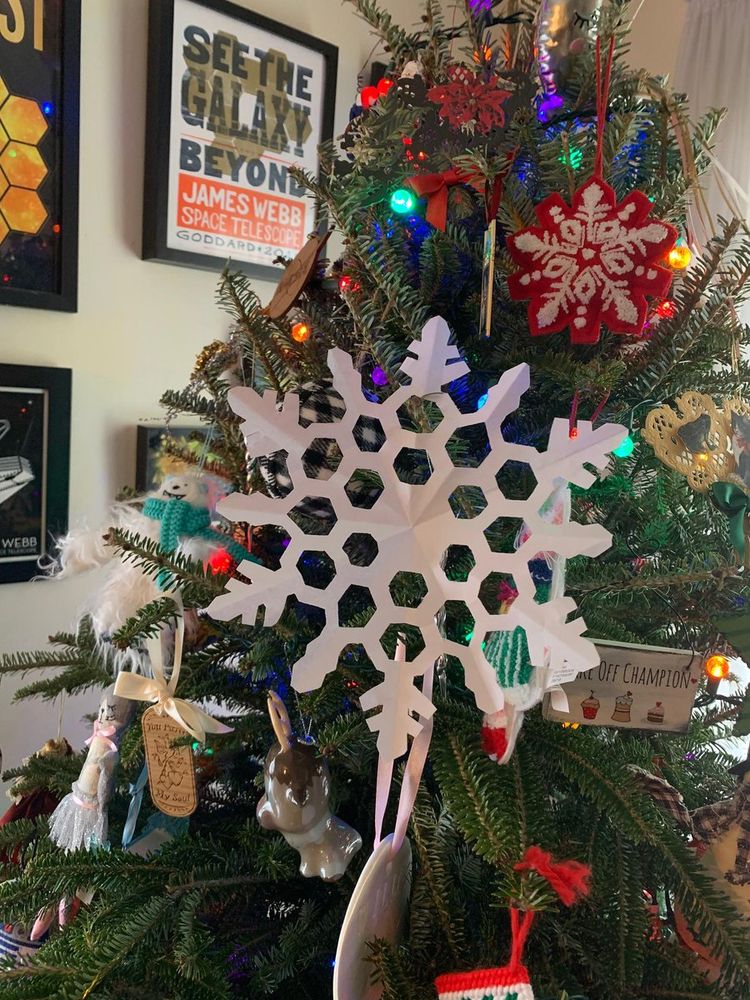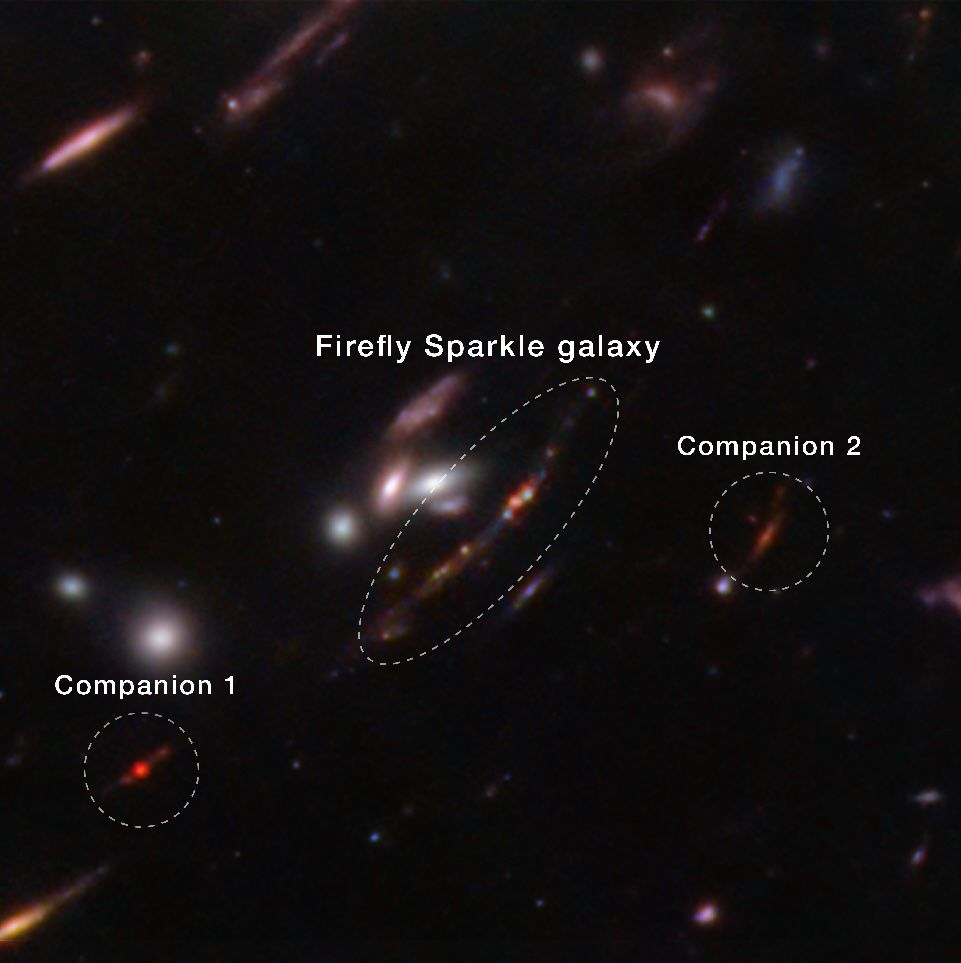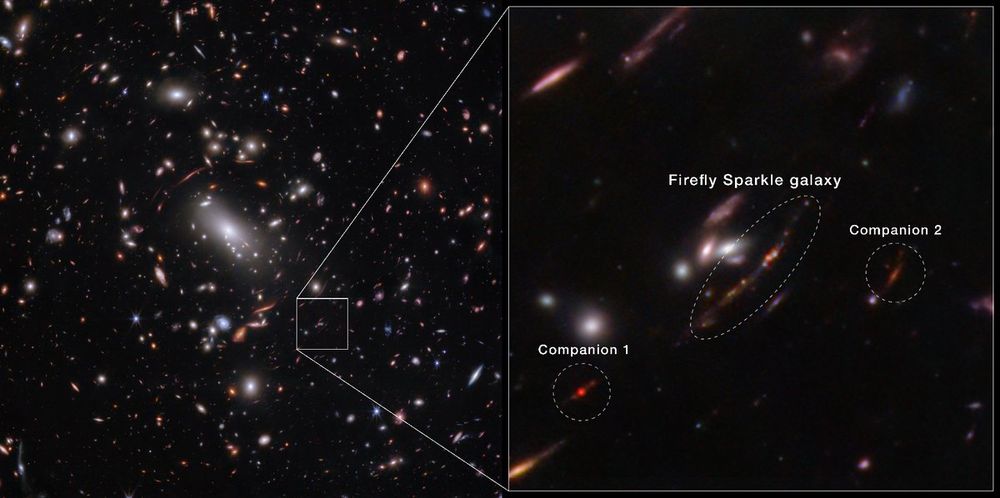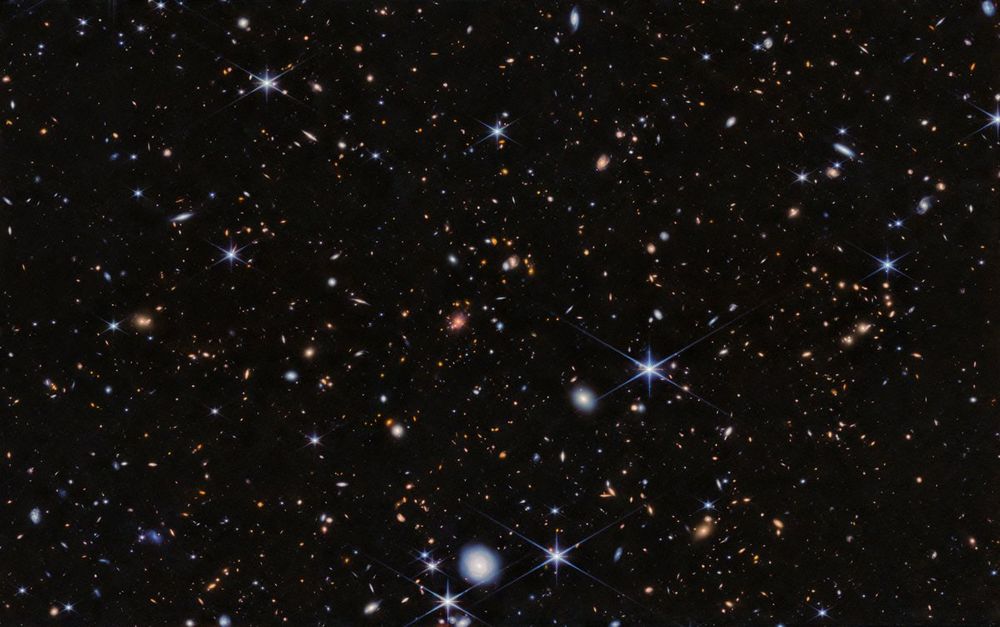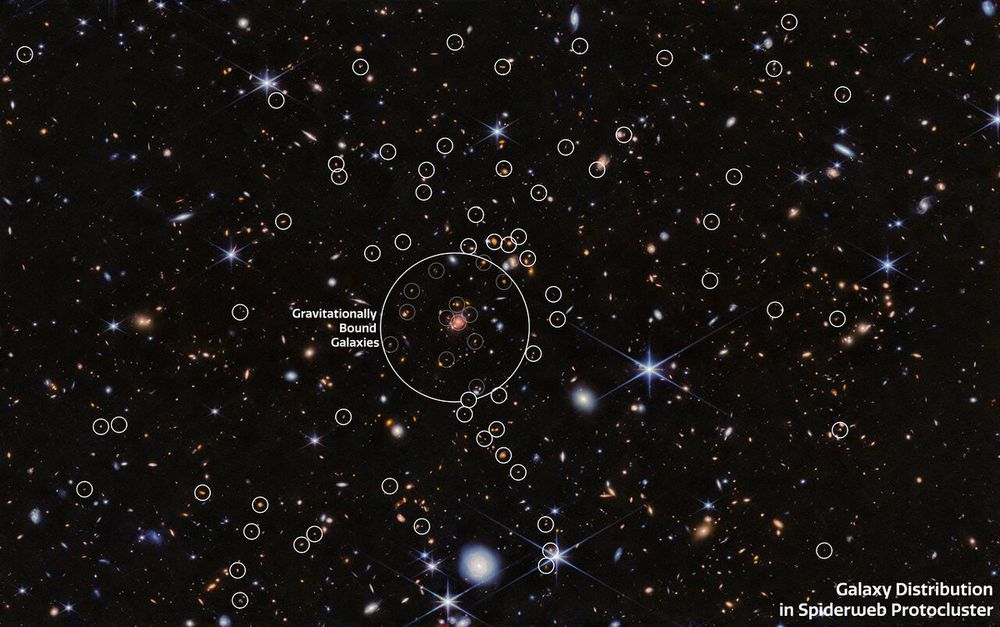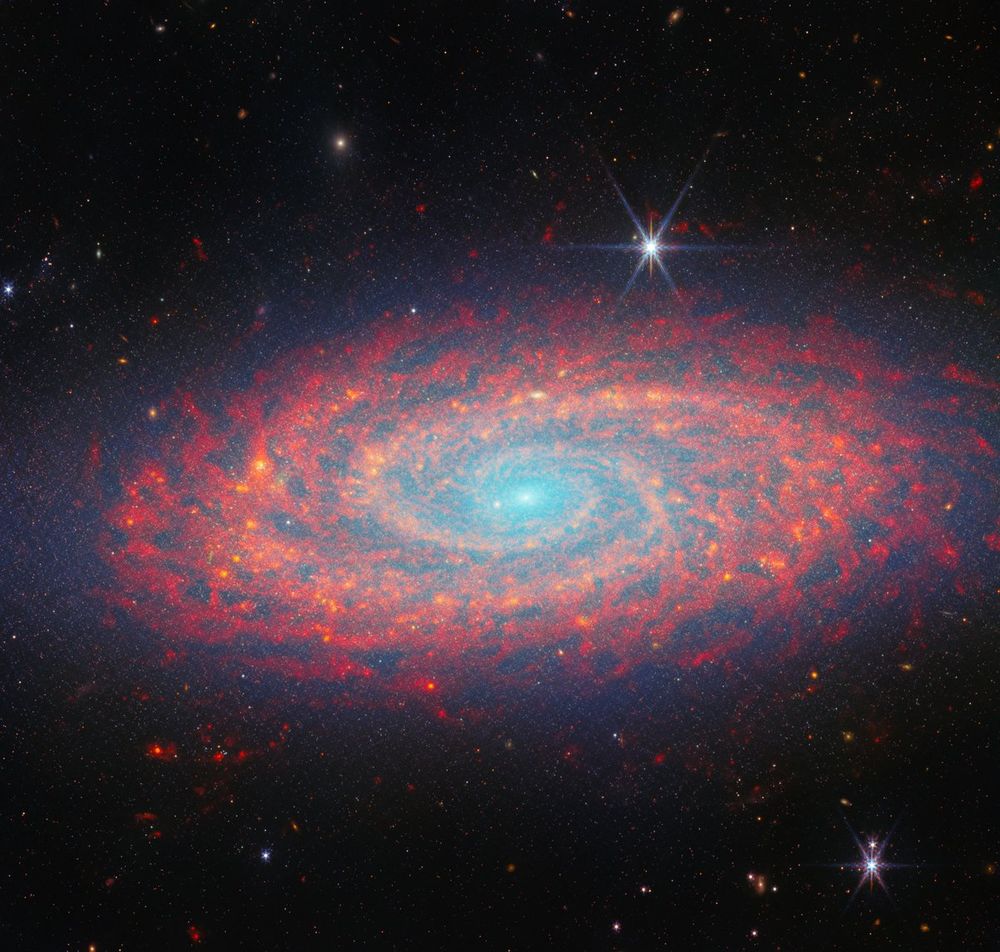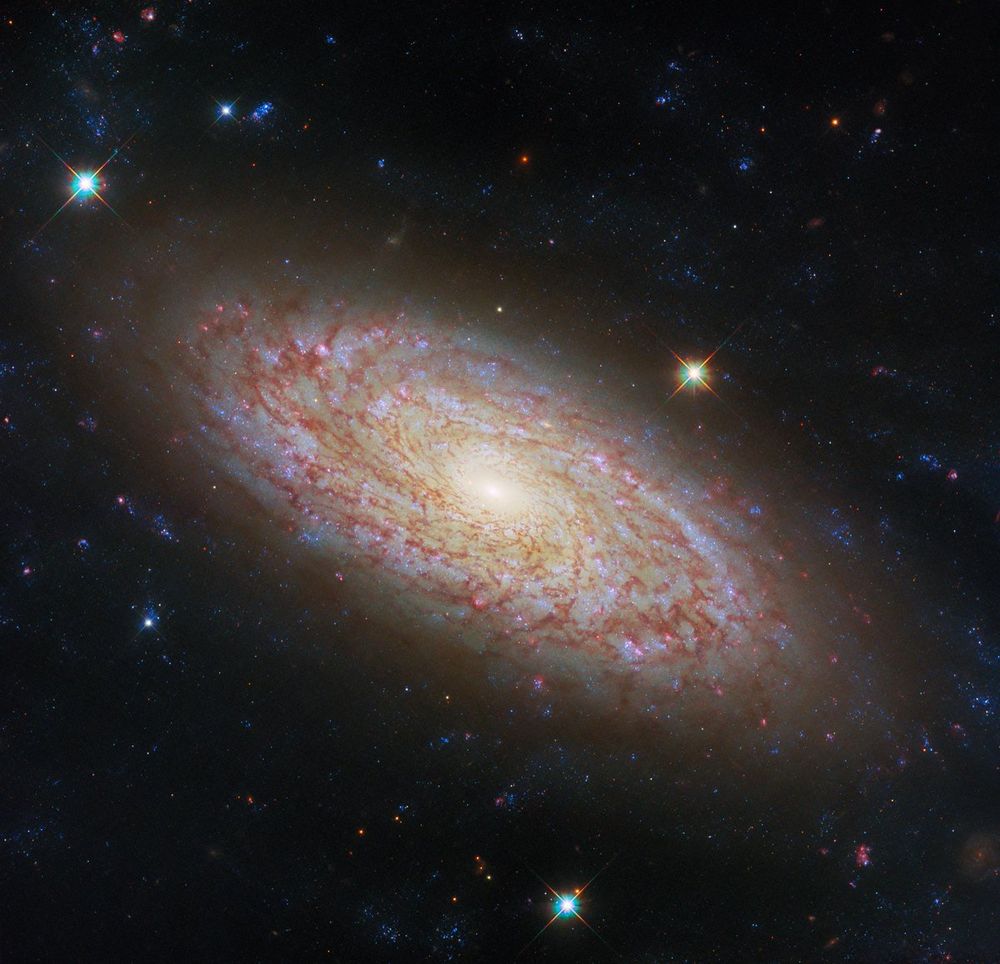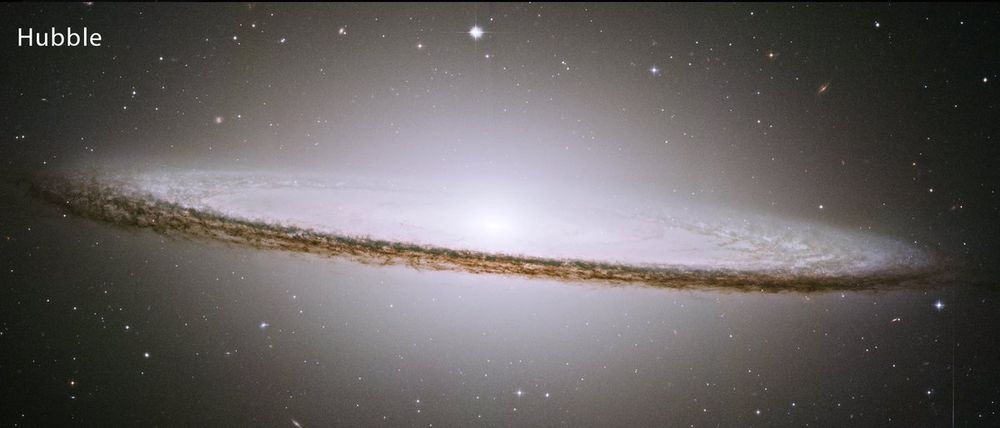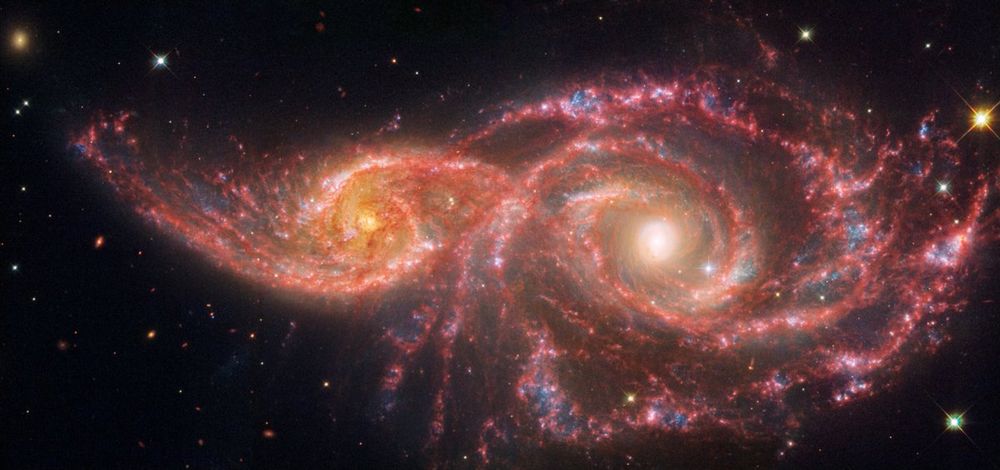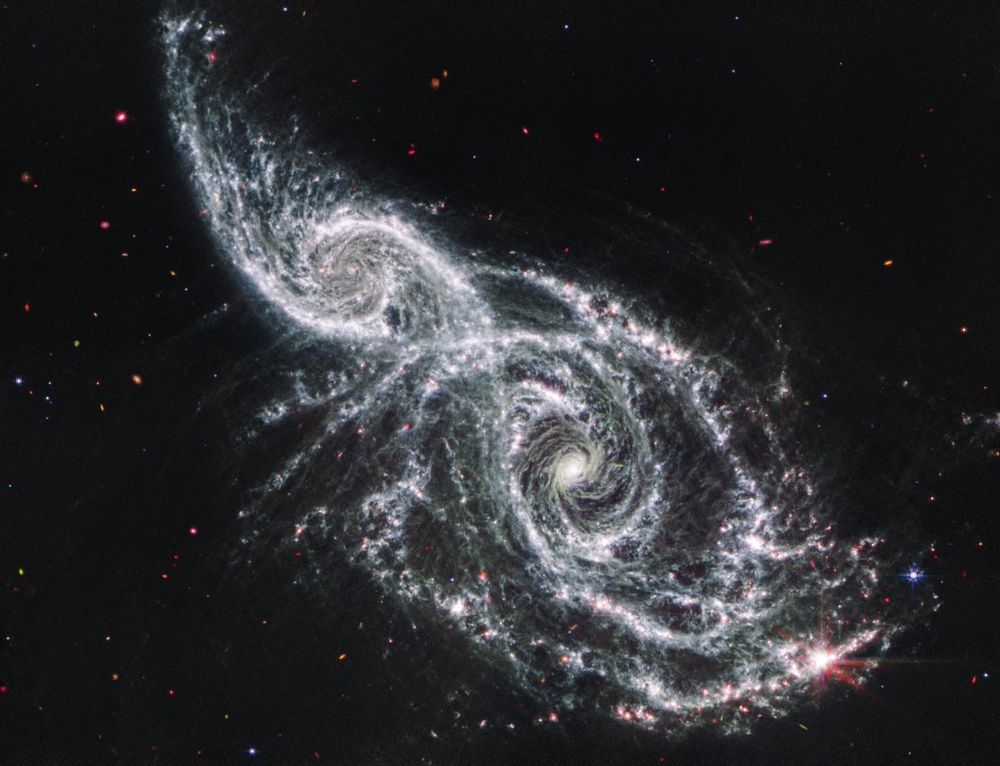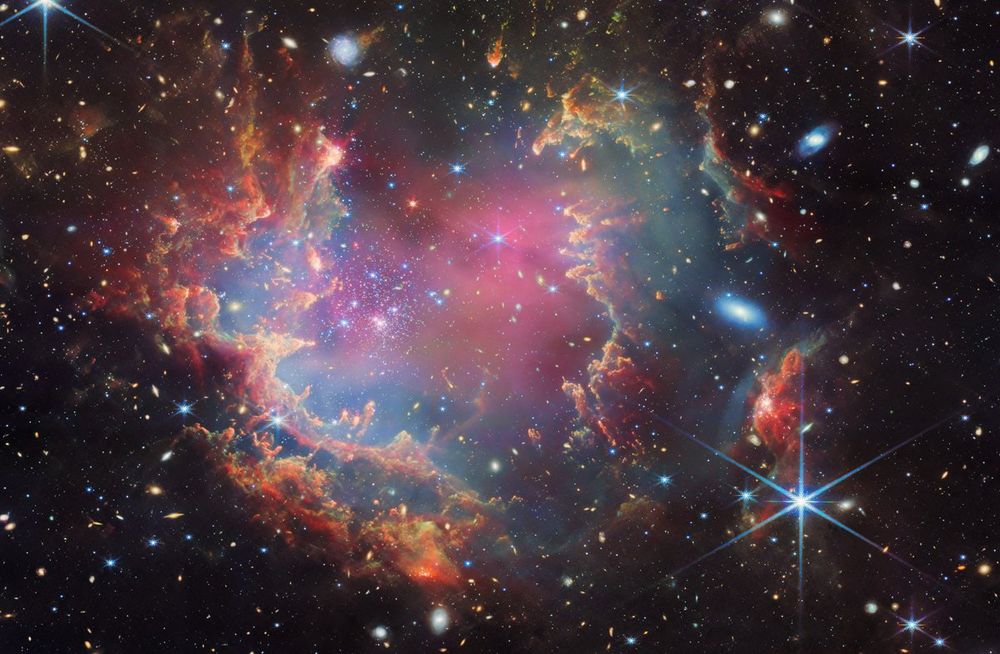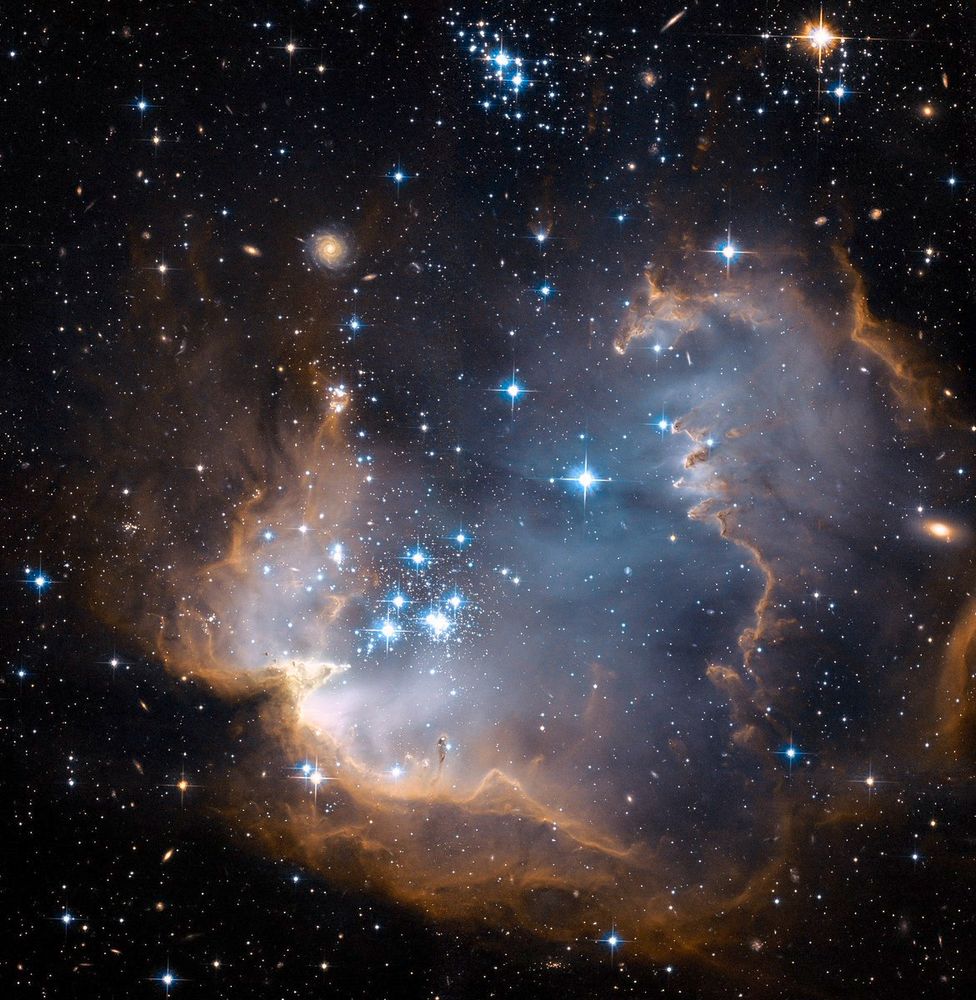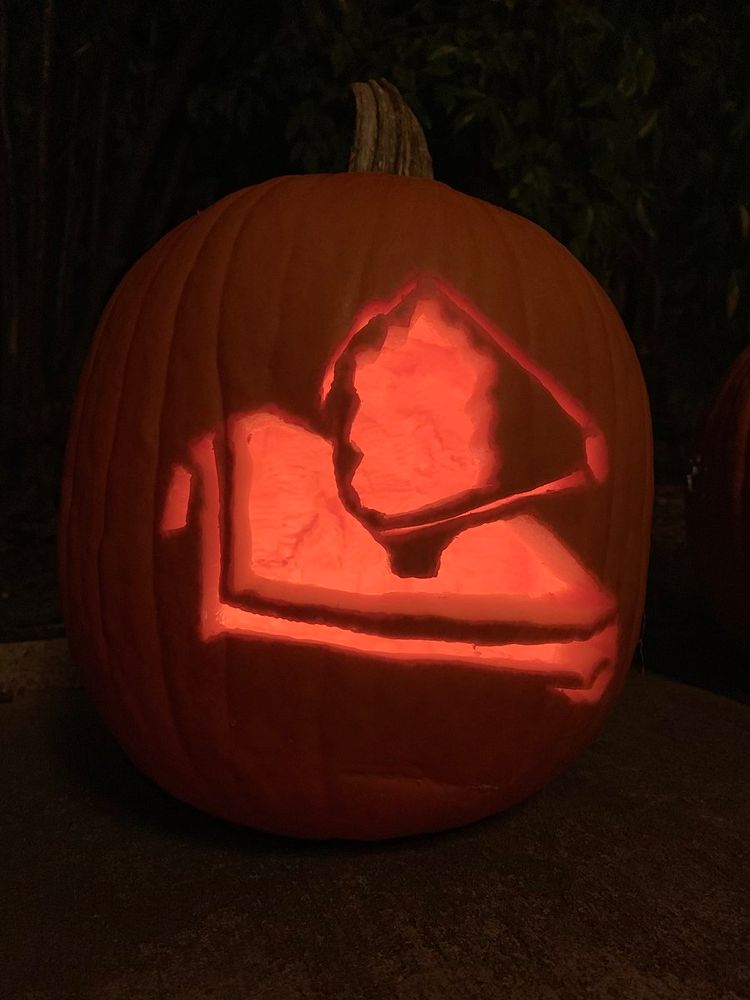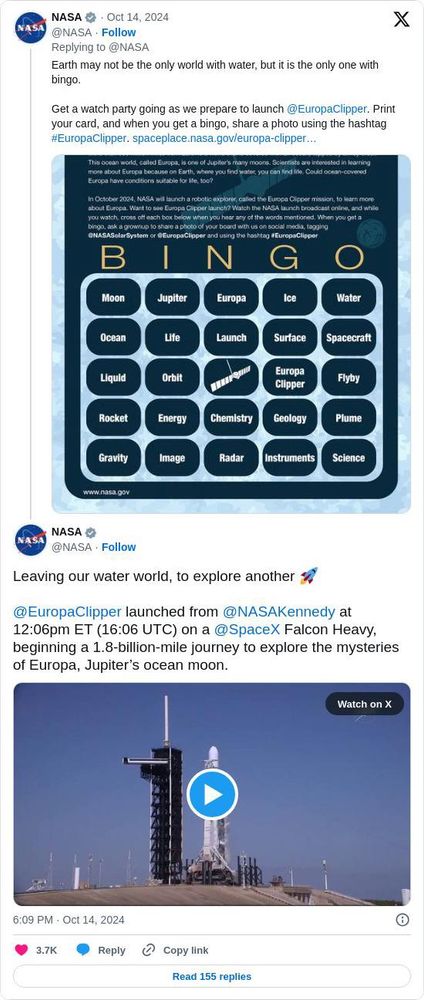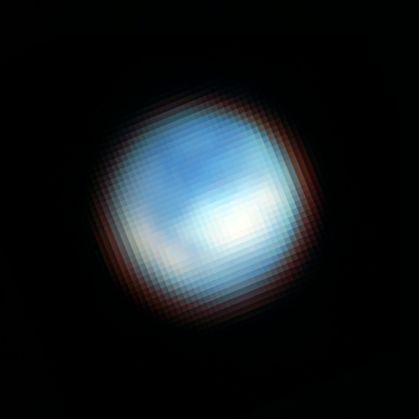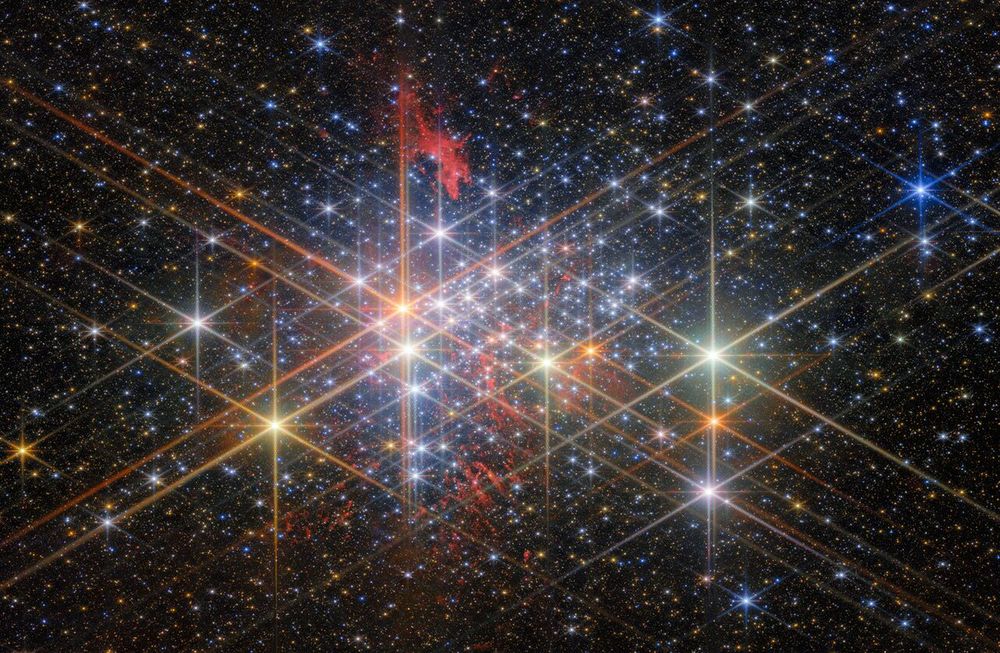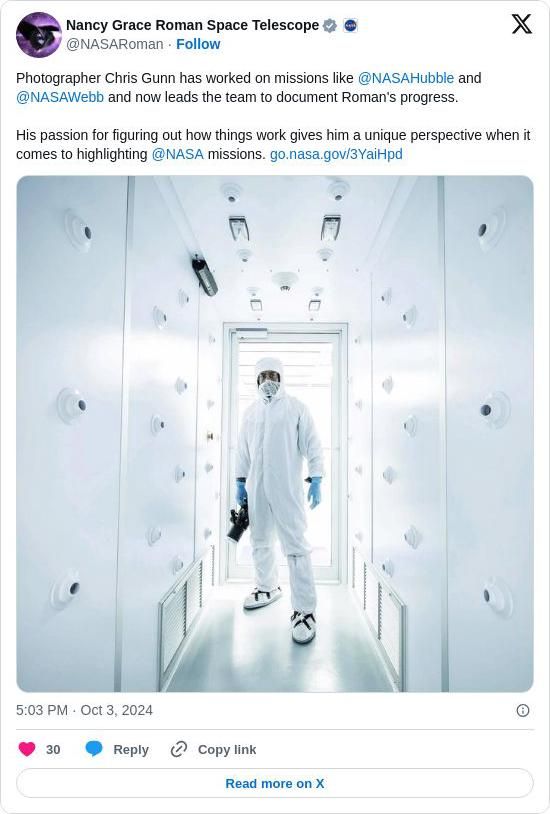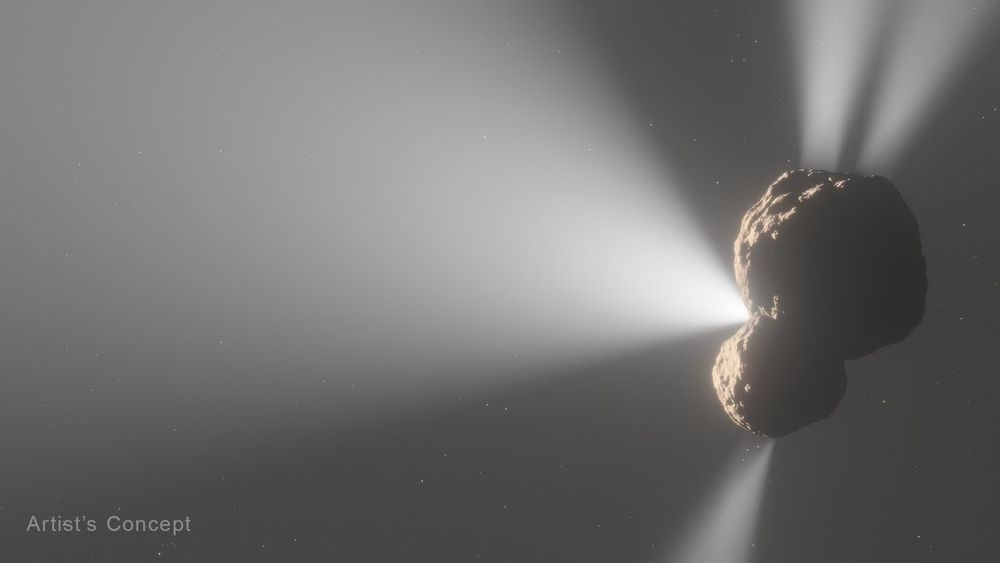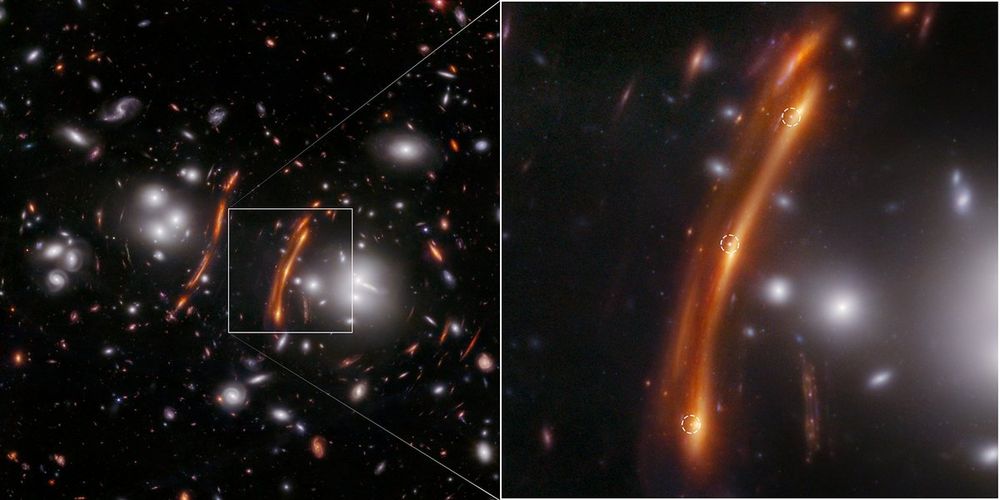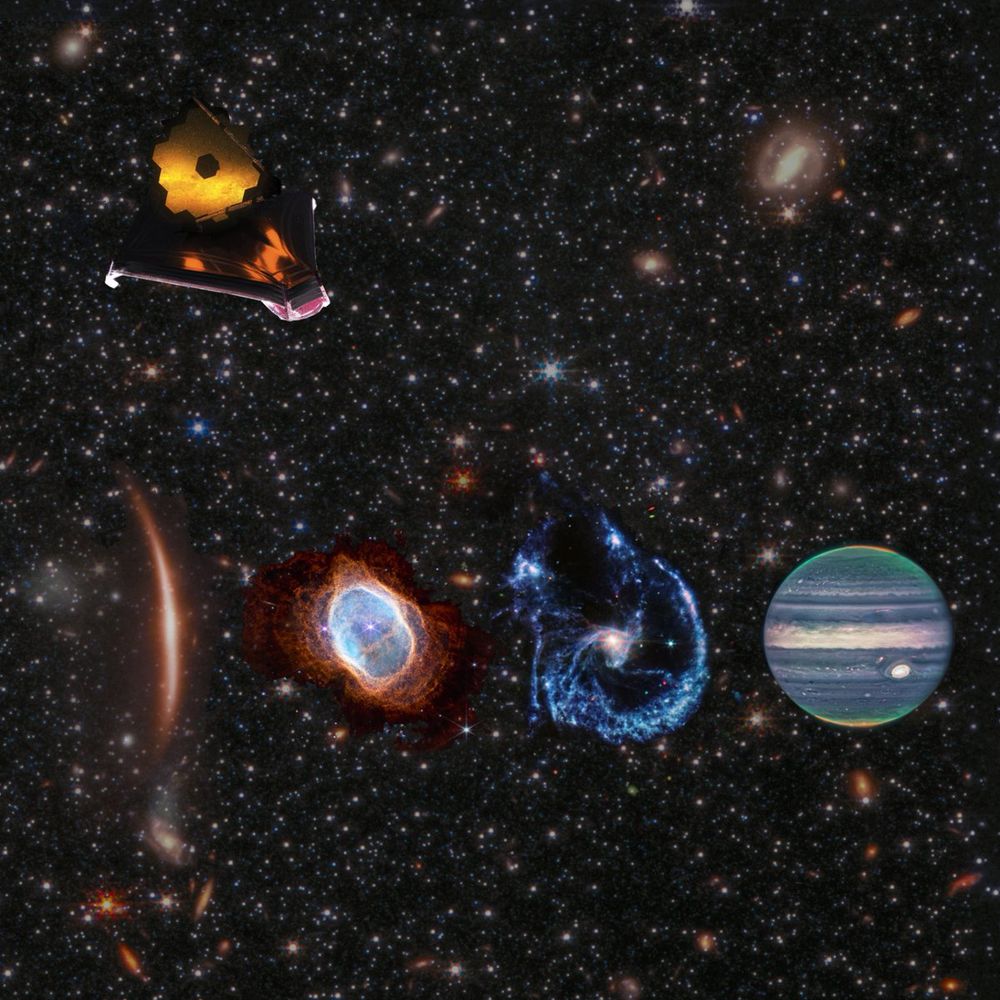NASA Webb Telescope
⚠️ MIRROR OF twitter.com/NASAWebb
⚠️ If you own the original account and want to claim this, please contact @twttr-mirrors.bsky.social
- Webb is solving mysteries it created. Remember “little red dots?” They seemed too big to exist in the early universe... and maybe theory couldn’t account for them. It turns out they may be a new class of galaxy containing growing supermassive black holes. t.co/OXo6TzNgus t.co/Y
-
View full threadWe know LRD emerged in large numbers and then declined between ~600 million to 1.5 billion years after the big bang. Some 70% of them show evidence of containing rapidly orbiting gas - a sign of an accretion disk obscuring a central supermassive black hole.
- Questions remain: why aren’t LRD seen after 1.5 billion years post-big bang? Why aren't they bright in X-rays like modern black holes? Is this how black holes grew in the early universe? Future observations will help astronomers find answers; for now this "case" remains open.
- Because these Little Red Dots (LRD) are so distant, they hadn’t been discovered prior to Webb. First spotted in the first six months of science observations, a large number were more recently found in its archive of publicly available data.
- Like images of broken light, Webb captured these carbon-rich dust shells around a binary star system. Drifting swiftly outwards, they are seeding their surroundings with carbon - one way elements spread across the universe. t.co/gjfLhdaP1x t.co/rbFjcpKjgm
-
View full threadThe dust here isn’t uniform. In places it has “piled up” in amorphous clouds as large as our whole solar system; other individual particles float freely. The spread of this carbon-rich dust into the galactic neighborhood is key for the formation of solar systems like ours.
- Some of these dust shells have persisted for more than 130 years, and this system could generate tens of thousands of shells over hundreds of thousands of years. Ultimately, massive stars end their lives in a supernova explosion, likely the fate of Wolf-Rayet 140.
- Though many events in space take place over vast timescales, these rings (Webb spotted 17 of them) are moving outward from their stars at more than 1600 miles/s, making them noticeably different from one year to the next. This animation shows changes in WR140 between 2022-2023.
- Like clockwork, the stars’ winds generate dust for several months every eight years, as the pair make their closest approach to each other. Webb shows where dust formation stops — look for the darker region at top left of the images.
- Wolf-Rayet 140 contains two massive stars that follow a tight, elongated orbit. (In these images, they are within the central white dot.) As they swing past each other, their stellar winds collide, compressing and forming these rings of carbon-rich dust.
- A riddle wrapped in a 20-year-old @nasahubble mystery… Webb confirmed a controversial finding of Hubble’s - planet-forming disks in the early universe that are longer-lived than they should be, given the conditions in their environment. Read more: t.co/NVsUmuHmlf t.co/PYms9yaWEX
-
View full thread@NASAHubble Webb's instruments can split up light into its components, unlocking the chemical make-up of whatever it is observing. Webb saw that the stars in star cluster NGC 346 do have longer-lived disks allowing their planets time to form and grow - despite the lack of heavier elements.
- @NASAHubble How do these disks survive long enough to form massive planets? Maybe it takes longer for stars in clusters with fewer heavier elements to blow away their disks. Maybe the gas clouds that formed these stars are more massive, producing bigger disks that take longer to disperse.
- @NASAHubble In 2003, Hubble found evidence of a massive planet in our galaxy from a long-ago time when stars only had small amounts of heavy elements like iron and carbon - the building blocks of planets. How could this planet grow so massive in these conditions? t.co/9rupDl5FxL
- @NASAHubble Webb recently took a look at a star-forming cluster (in the nearby Small Magellanic Cloud) which also has a relative lack of heavier elements, making it a close proxy, with similar conditions, to star clusters in the earlier universe - like the one Hubble observed.
- It's that time of year, let's make some snowflakes! ❄️ Fold and cut your own using our Webb template: t.co/ET8aN3vBO8 t.co/gJcUNdccKF
- Someone struck a match against the night… Webb discerned distinct star clusters in the Firefly Sparkle galaxy, which existed 600 million years after the big bang - the first discovery of an actively forming galaxy as lightweight as the young Milky Way. t.co/cJenCOWLsc t.co/BWCarE
-
View full threadAnother piece of evidence that the galaxy is still in the process of forming is that the projected actual shape of the galaxy shows its stars haven’t settled into a central bulge or thin, flattened disk.
- Other galaxies detected by Webb from this time period in the Universe’s history are much more massive than the Firefly Sparkle, which itself is more similar in mass to what our Milky Way’s might have been at this same stage of development.
- The gravity of a massive foreground galaxy cluster has magnified and stretched Firefly Sparkle's star clusters into a line of bright sparks, giving it its name. For Webb to resolve a galaxy from so early in the universe, let alone to see its distinct components, is extraordinary.
- These clusters of star formation are the Firefly Sparkle galaxy’s building blocks. The analysis of the colors confirms that the star formation didn’t happen all at once, but was staggered over time, with each clump of stars at a different phase of formation or evolution.
- Webb and the Spiderweb protocluster? Let’s get stuck in! 👇 What is it? A galaxy cluster in formation, 10 billion light years away, composed of more than 100 known galaxies. Webb has found some new ones! t.co/LA0d0hVw3t t.co/gan8TOrP3Y
-
View full threadThe characteristics of the new galaxies Webb has spotted are shedding light on how galaxies grow and interact as clusters form. Most galaxies in local clusters are old and not very active. The ones in the Spiderweb are comparatively adolescents.
- Surprises? The previously-known galaxies in the Spiderweb galaxy cluster are not as dusty as we thought. This may be because their star formation and growth are not being triggered so much by galaxy mergers, but by gas accumulating around the cluster
- Though the Spiderweb protocluster is well-studied, because of Webb’s capability to see infrared light, scientists are using it to observe regions of the Spiderweb that were previously hidden to us by cosmic dust.
- Pardon our dust! Webb’s near and mid-infrared view of spiral galaxy NGC 2090 highlights its two winding arms as well as the beautiful details of its swirls of dust and gas. t.co/5GHzbWezoX t.co/KNzLUvjmbk
- In visible light, the arms of NGC 2090 are not easily traceable because of its dust and gas and its patchy dusty disk - as seen in this recent @nasahubble view. This type of galaxy is called a flocculent spiral. t.co/HrkdsqIhXV t.co/PGd9RFb2rg
- @NASAHubble Across the disk of NGC 2090 are clusters of star formation that can be seen in both Webb and Hubble's images. Together, the telescopes are helping to create a fuller overall picture of star formation and galaxy evolution.
- Ring around the galaxy… Here’s Webb’s stunning new mid-infrared image of M104. This bright core of the galaxy is dim in this view, revealing a smooth inner disk as well as details of how the clumpy gas in the outer ring is distributed. t.co/wQSE9xGTXX t.co/p7zNl4YSwD
- Dust is one of the universe’s essential building blocks. Though this particular galaxy is not a particular hotbed of star formation, it does contain lots of stars for scientists to study, especially tight groupings called globular clusters.
- Also known as the Sombrero galaxy, M104 looks a bit more hat-like in @NASAHubble visible-light image (shown below), which showcases its prominent, glowing core.
- Webb has its eye on Titan, a moon of Saturn, a place where methane and ethane make up its liquid rivers and seas. Learn more about future Titan studies in Other Worlds Episode 3. NASA+: t.co/HDn825EwWE Youtube: t.co/CzJyKV0ZFA
- Take a deep dive into how our optics team keeps Webb’s mirrors in top performance shape, enabling it to continue seeing the universe in unprecedented detail. (Hint: by making small adjustments to the mirror segments as shown here.) t.co/d2HrQRA4Ct t.co/md5DPKibHI
- I always feel like somebody’s watching me 👀 Happy Halloween from @NASAWebb & @NASAHubble! This creepy new image combines mid-infrared light from Webb with ultraviolet and visible light from Hubble, revealing a pair of “eyes” from space. t.co/4RU3Hn2s8C t.co/LsR57qiLqG
-
View full thread@NASAHubble This pair may swing by one another repeatedly over the course of many millions of years. They might eventually meld, leaving behind completely reshaped arms, and an even brighter cyclops-like “eye” at the core. The areas of star formation really pop in this mid-infrared view.
- @NASAHubble These galaxies are busy places! In just one Earth year,they can form the equivalent of two dozen new stars that are the size of our Sun. That’s a lot compared to our Milky Way, which only forms the equivalent of two or three new Sun-like stars per year.
- @NASAHubble If we remove the Halloween goggles for a moment, we can see that these eyes are actually the cores of two galaxies. The smaller spiral galaxy on the left is IC 2163. It has been slowly “creeping” behind the larger galaxy, NGC 2207.
- It’s giving rainbows and unicorns, like a middle school binder 🦄🌈 Meet NGC 602, a young star cluster in the Small Magellanic Cloud, where astronomers using @NASAWebb have found candidates for the first brown dwarfs outside of our galaxy. t.co/jdupXcWiAH t.co/v4FBxAzulj
-
View full threadBrown dwarfs are not quite stars and not quite gas giant planets either. They are also free-floating; they aren’t gravitationally bound to a star like a planet would be. But they do share some characteristics with exoplanets, like storm patterns and atmospheric composition.
- @NASAHubble saw NGC 602 harboring very young low-mass stars; Webb is showing us how significant and extensive brown dwarfs may be here. This will help us understand how brown dwarfs form, particularly in an environment similar to the harsh conditions of the early Universe.
- This cluster has a similar environment to star-forming regions that would have existed in the early universe - with very low amounts of elements heavier than hydrogen and helium. It’s drastically different from our own solar neighborhood and close enough to study in detail.
- Shopping for pumpkins this weekend? Consider carving your own James Webb Space Pumpkin! We have five Webb-related designs, with differing degrees of difficulty. If you make a Webb-related pumpkin, be sure to tag us so we can share! t.co/VYvv5bJgXh t.co/tL5Yd839Vm
- Congrats to the whole @EuropaClipper team on a successful launch! We'll wave as you fly by on the way out to your planetary front row seat. We're so happy and not at all jealous 😜
- Webb took a look at Europa in 2023! t.co/VzLKL09CX9 (P.S. Our image is pixelated because Europa is very small (~90% the size of Earth’s Moon) compared to its huge distance of 390.4 million miles from us.)
- Imagine a sky full of hundreds of stars as bright as the full moon… If our solar system were a part of this “super star” cluster, that is what we might experience. Here is Webb’s look at Westerlund 1, one of the closest clusters of its kind. t.co/LyphCSpnwh t.co/kGFdvo2MLV
- Super star clusters are young and contain more than 10,000 times the mass of the Sun packed into a small volume. Westerlund 1 is the most massive of its kind yet identified in our galaxy, with 50,000-100,000 times the mass of the Sun in a region less than six light-years across.
- Chris Gunn's photography on Webb was stellar! ✨ Check out some of our fav Chris Gunn photos of Webb's journey to space here: t.co/8h4g2ydjWE
- Centaurs are objects in orbital flux: small and icy, pushed inward of Neptune by its gravity, not quite comets...yet. Webb mapped gases spewing from Centaur 29P in high detail, providing new insights into the formation and evolution of the solar system. t.co/iQovSOJLkp t.co/96nOOlnp8
- A New H0pe? Scientists are using Webb to measure the expansion of the universe, by pointing it at a gravitationally lensed supernova, SN H0pe. The light from this exploding star has been bent and magnified by a galaxy cluster between it and us. t.co/QGLdzBmeDY t.co/Nbd3OdhOmU
- Today is Webb’s 1000th day in space! 🎉 Our #UnfoldTheUniverse "Lifer" checklist: A spacecraft impacting an asteroid Unexpected dust (supernova remnants and early galaxies) Exoplanets atmospheres Early black holes The farthest galaxy (so far!) What's your fav discovery?
